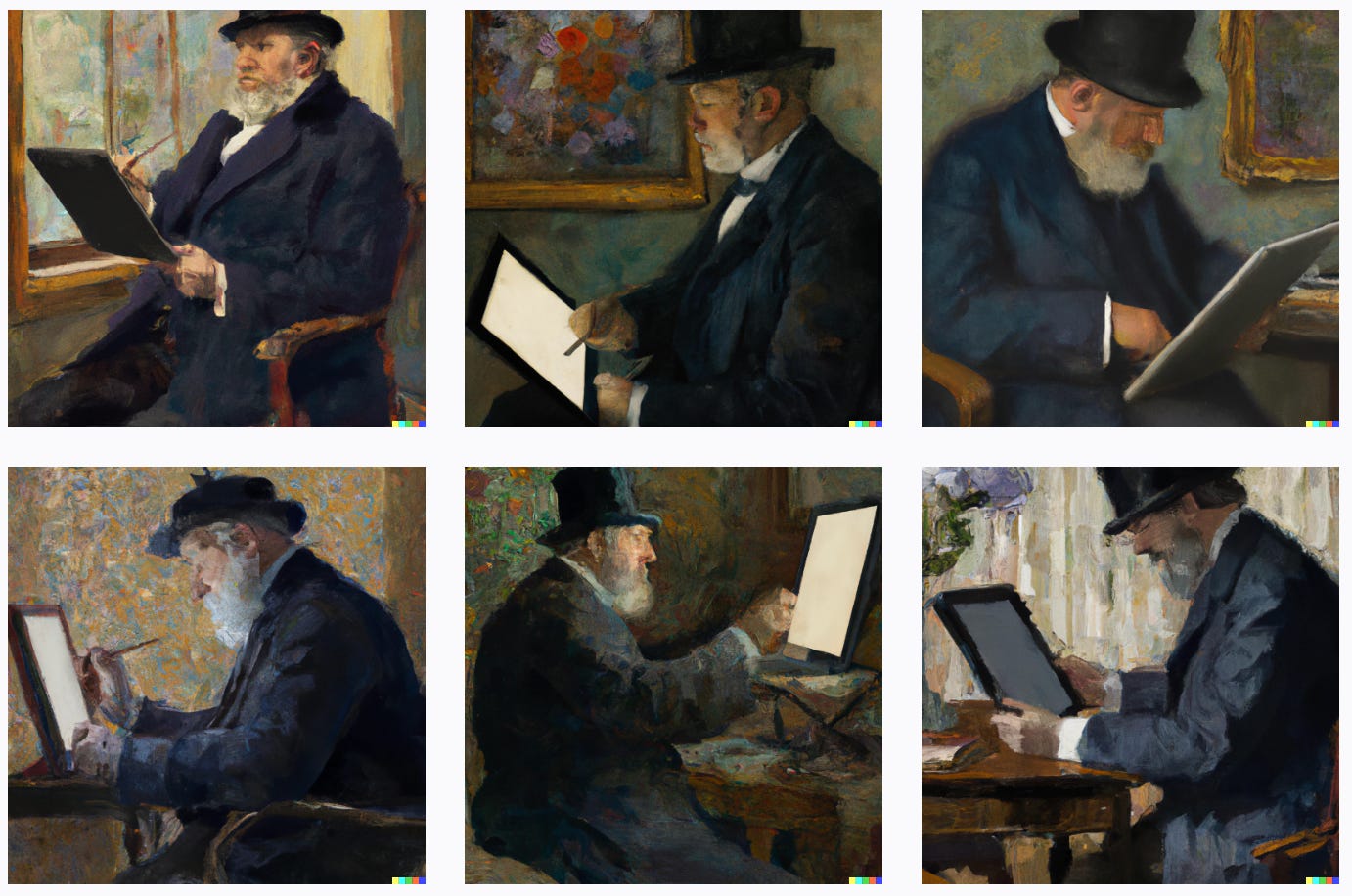2018: "machines can never be creative."
2022: " I asked for 'Claude Monet generating Rubens paintings on iPad Pro, 1908,' and it drew Manet instead! where is the art history? I am an Art curator." by Eva Rtology
Dalle 2, Imagen, and Co: Diffusion models
are new types of generative models that are very powerful. They do amazing things when making high-quality art, sometimes even better than human artists. Machine Learning, in fact, is a truly remarkable tool for generating impressive art.
How can we go beyond images and generate scenes?
The main idea behind diffusion modeling is that if we can build a learning model that can figure out how information loses its value over time because of noise, then we should be able to reverse the process and get the information back from the noise. This idea is similar to VAEs in that it tries to maximize an objective function by first projecting the data onto the latent space and then bringing it back to its original state. But instead of learning how the data is distributed, the system tries to model a series of noise distributions in a Markov Chain and "decodes" the data by undoing/denoising the data in a hierarchical way.
AI artists and Machine Learning
Artificial Intelligence has been used for decades but has recently gained popularity in the arts in a particular sense: today, we can train machines to produce art. Specifically, using mathematical algorithms and deep learning tools, we can teach machines to generate art that looks like the work of human artists. This is a new form of Artificial Intelligence.
It would be effortless to assume that AI (as embodied by these machine-generated works) will soon replace human artists with robots.
Hybrid human/machine artistic processes will become more and more common, and the role of artists will almost certainly change in the future.
In this article, we present a few AI art tools and see how these tools can be used to generate exciting artwork.
To start, an artist needs an interesting prompt, for example: "Salvador Dalí generating Keith Haring's paintings on iPad Pro, 1918, photorealistic drawing, from the Musée Marmottan Monet."
Would you like to see AI generating your paintings?
We leave it to the reader to find out how.
Artists and Art Historians, please click HERE.









Thank you for mentioning that this type of art is no substitute for human artists. Your pictures are wonderful as always!